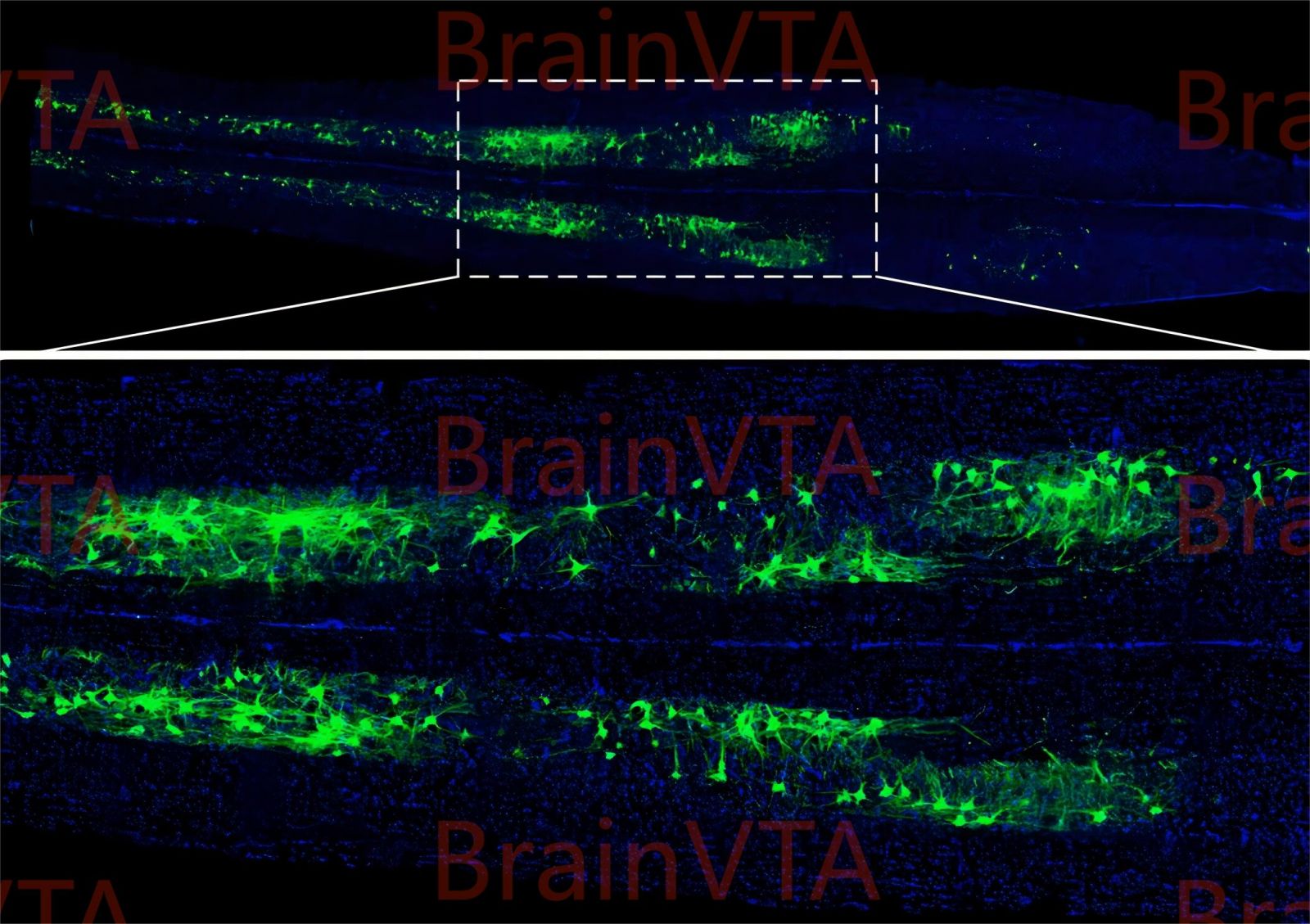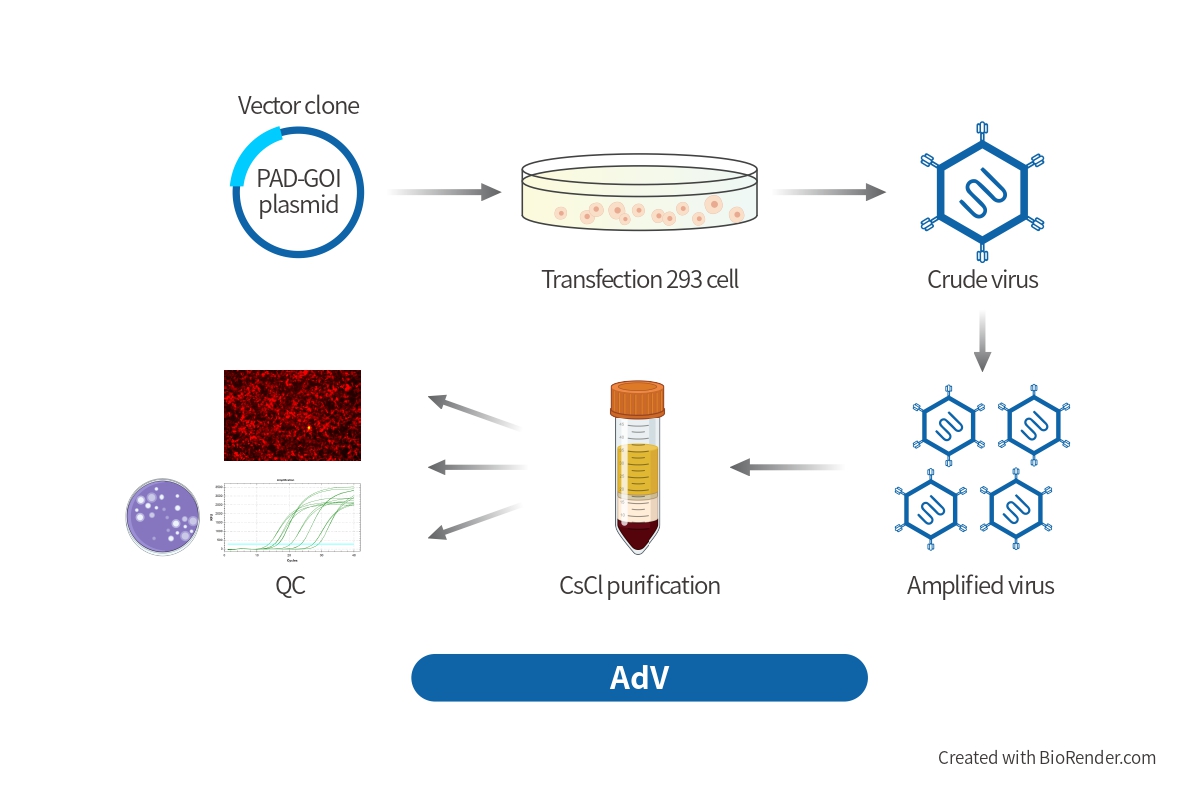.jpg)
Fig1 Schematic diagram of VSV trans-synapses transmission (Beier KT et al. Frontiers in Neural Circuits. 2013.)
BrainVTA has established the recombinant VSV platform based on our experienced staffs and our advanced molecular biology techniques, could offer VSV services to promote VSV-based neuronal tracing studies.
Applications
● Multisynaptic tracing from peripheral to brain center, or the lower to the higher brain region.
● Tracking the neural networks in disease or injury model.
● Changes in neural networks during neural development.

Fig.2 VSV-GFP was injected into the dorsal hippocampus of mice, and perfusion was obtained after 72 hours. There were many signals in the lumbar segment of the spinal cord, indicating that the hippocampus anterograde transsynaptic tracing into the spinal cord.(Figure provided by Dr. Fuqiang Xu's lab of Center for Brain Science at WIPM)
Popular VSV particles
| Cat# | Name | Description | Price |
|---|---|---|---|
| V01001 | VSV-EGFP | Anterograde, multisynaptic | Inquiry |
| V01002 | VSV-mCherry | Anterograde, multisynaptic | Inquiry |
| V01003 | VSV-BFP | Anterograde, multisynaptic | Inquiry |
| V02001 | VSV-EnVA-ΔG-eGFP | Combined with AAV-TVA and AAV-VSVG, anterograde monosynaptic | Inquiry |
| V02002 | VSV-EnVA-ΔG-mCherry | Combined with AAV-TVA and AAV-VSVG, anterograde monosynaptic | Inquiry |
| V03001 | VSV-ΔG-EGFP | Combined with AAV-VSVG, anterograde monosynaptic | Inquiry |
| V03002 | VSV-ΔG-mCherry | Combined with AAV-VSVG, anterograde monosynaptic | Inquiry |
| V03003 | VSV-ΔG-taueGFP | Combined with AAV-VSVG, anterograde monosynaptic | Inquiry |
| V03004 | VSV-ΔG-taueGFP-ferritin | Combined with AAV-VSVG, anterograde monosynaptic | Inquiry |
References
-
Hastie E, Grdzelishvili VZ. Vesicular stomatitis virus as a flexible platform for oncolytic virotherapy against cancer. J Gen Virol. 2012 Dec;93(Pt 12):2529-45.
-
Bishnoi, S., Tiwari, R., Gupta, S., Byrareddy, S.N., Nayak, D. Oncotargeting by Vesicular Stomatitis Virus (VSV): Advances in cancer therapy. Viruses. 2018; 10(2): 90.
-
Beier KT, Saunders A, Oldenburg IA, Miyamichi K, Akhtar N, Luo L, Whelan SP, Sabatini B, Cepko CL. Anterograde or retrograde transsynaptic labeling of CNS neurons with vesicular stomatitis virus vectors. Proc Natl Acad Sci U S A. 2011 Sep 13;108(37):15414-9.







